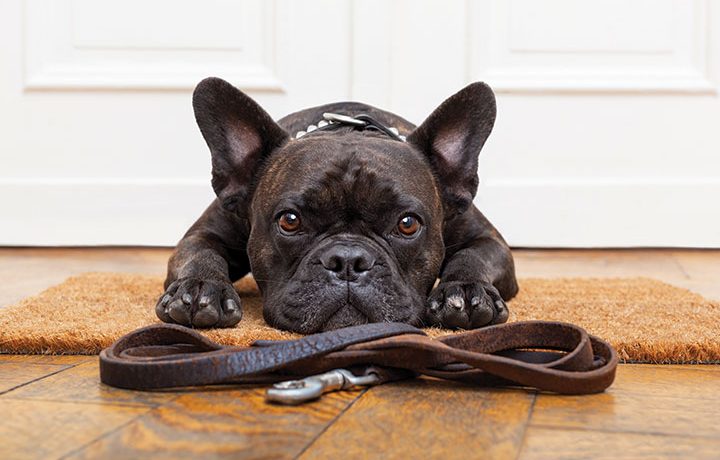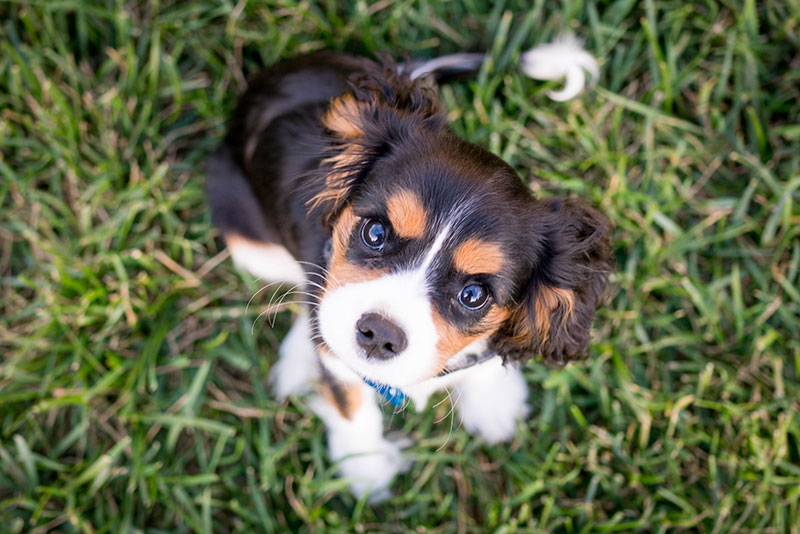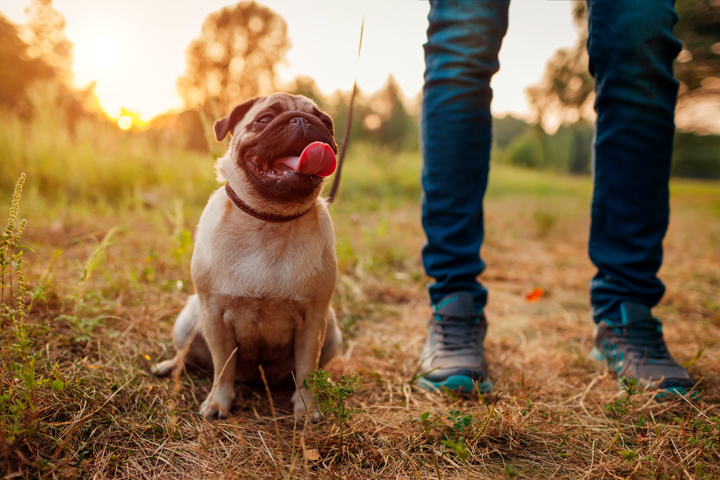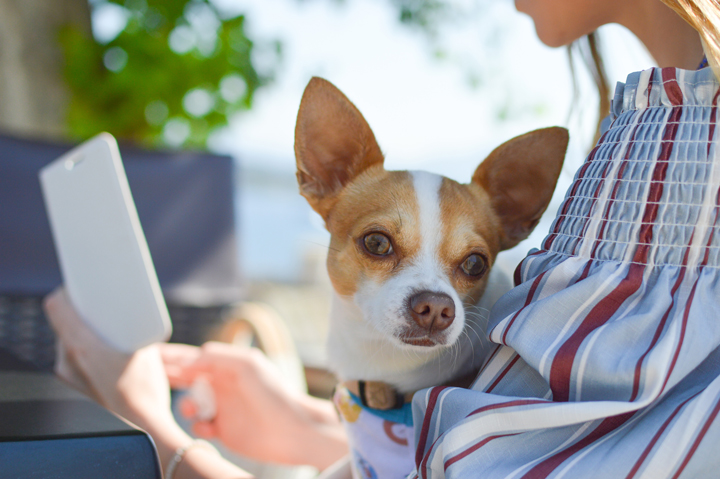5 Steps to Training a Stubborn Dog

Pet owners often say that their dog is stubborn or hardheaded, but some pet training professionals believe that there is really no such thing as a stubborn or hardheaded dog. What owners perceive as being stubborn or hardheaded in a dog could indeed simply be something else altogether.
What could owners mean, then, when they say their dog is stubborn?
Pet owners think their dog is stubborn, but what they’re really seeing is an untrained dog. Owners say things like “He knows I asked him to sit. He’s just being stubborn because visitors are here.” Nope, he’s not being stubborn — he’s too distracted. The environment is filled with lots more exciting things, and sitting is the last thing on the dog’s mind. That doesn’t mean he’s stubborn–that means the owner isn’t done training. Yes, this is squarely on the owner, not the dog.
If it were that easy for the dog to sit; he’d go ahead and sit! It’s not like sitting is physically difficult or time consuming. It’s pretty darn easy for a dog to sit. So why wouldn’t the dog sit? Not hardheadedness, not stubbornness — it’s lack of training. When training experts say lack of training, what they really mean is lack of training in the face of distractions. That’s usually what trips most dogs up, what gives them the label of stubborn and hardheaded.
An example of a “stubborn dog”
For example, consider a dog named Nemo, who is a puller on walks. He likes to go now, go fast, and go far. Logically, it would be much easier and more pleasant for him to walk on a slack leash. A tight leash is a lot of work for the dog, as he’s constantly pulling, and it’s pretty uncomfortable — the leash is pushing against his trachea and neck muscles. Wouldn’t it be more comfortable for Nemo to slow down a bit and have a nice, enjoyable loose-leash walk? Well, yes, it probably would. So why, then, would Nemo still pull? Must be because he’s stubborn. Wrong! He’s excited. He’s over-threshold. He can’t wait to find out what scent the next blade of grass holds and just wants to know which dog peed on the neighbor’s mailbox. Nemo can’t wait to add his own scent. In short, he’s awfully excited to be out on a walk.
He’s far from stubborn or hardheaded. He’s flat out excited.
Plain and simple.
But it’s much easier for the owner to blame Nemo, rather than put the blame where it belongs: on the owner. In this case, the owner needs to spend more time teaching Nemo that a slack leash is the way to get to that next blade of grass or to the neighbor’s mailbox.
What should an owner do if he or she thinks they have a stubborn dog?
Teach the dog! If an owner has a dog that pulls on the leash, get some really good treats, such as chicken, steak or hot dogs, and cut them into pea-sized pieces. Then, follow these steps:
- Take the clicker and these treats on the dog’s walk.
- When the owner steps out the front door, wait for the dog to look. Don’t say anything to him, just wait.
- The instant he looks in the owner’s direction, the owner should click and give the dog a goodie.
- The owner should then take another few steps and stop. Wait for the dog to look in the direction of the owner then click and treat.
- Next, the owner should take several steps and when the leash gets tight, she should stop. She should just wait for her dog to turn to look in her direction before she clicks, treats, and begins to walk again.
The dog will get the message that the walk will continue when he looks at the owner. He’ll start to look at the owner
a lot and she’ll then click and treat a lot. When the dog is looking at her, he’s probably not pulling on the leash. Voila—the owner just taught her dog to walk nicely on a leash!
Now it’s time to add in small distractions.
Make a list of the things that really interest the dog. For Nemo, the dog used as an example, it’s the smells that
really draw him in. He loves to smell the ground, the bushes, the road. Those are Nemo’s distractions — another dog could really notice other dogs, or kids on bicycles, joggers, or other distractions.
The key to success is to start where the dog notices the distraction, but isn’t consumed by it.
If the owner needs to walk 100 yards away from the distraction, that’s okay. The owner is the teacher — the owner sets up the environment so the dog can succeed. A smart owner will click and treat every second that the dog doesn’t react to the distraction. If the dog has a problem with, for example, jumping on guests, the owner should put the dog on a leash before visitors arrive. Jumping is prevented by simply keeping the dog away from the guests and by asking the dog to sit.
Make sure the dog is really good at sitting, though, without the distractions of the guests! When no one’s at the door, a smart owner will ask the dog to sit, then open the door. Can the dog sit even when the owner opens the door? If the dog can’t do it when no one’s there, he or she won’t be able to do it with actual guests on the front porch. The dog is not stubborn—the dog just doesn’t know how to do it.
The next time an owner is tempted to call their dog hardheaded or stubborn, the owner needs to ask: did I really teach the dog how to do the behavior? With distractions?
Thankfully, it’s easy to teach a dog how to deal with distractions; it just takes some practice, some good reinforces, and a trusty clicker.
This article was originally published in our Fall 2016 print issue.










I have been doing the same steps that you have describe over a year now and do it several times a day everyday and my dog kylo still will not stop jumping and running around he drags me on to the ground when on the leash is here anything else to try
my strong-willed dog’s issues are more about behavior inside the house. Sitting, staying, don’t jump up, no biting. those kine of things. I want to break her will, but not break her spirit. We try putting her in the kennel for things like the biting and jumping up (too many times), but it’s to no avail. we try praising her and giving her treats for doing it right, but it doesn’t seem to be enough to want to deter her from bad behavior.
Any suggestions?
We suggest finding a local well-reviewed pet trainer!
That sounds challenging! Have you tried working with a dog trainer?
My dog is really good in general, but if she decides she wants to go in a certain direction or if she doesn’t want her walk to end it’s all over. She’ll just sit in protest and refuse to move. If I try to pull on her leash or to pick her up, she’ll go belly up on the ground (she knows I can’t pick her up from that position). I’ve tried using treats, squeaky toys (which get her attention fast), and squirting her with water. Only this last one seemed to work, but I had to keep doing it (or threatening to do it) and if I’m not carrying a water bottle I have no leverage! It’s also not something I can do in cold weather. I walk her a lot too, so it’s not like she doesn’t get enough exercise or socialization (though I guess she could always want more). Any advice on how to manage this behavior would be greatly appreciated.
We have a now 71/2 month old Beagle. She has everything backwards. Going outside is for play, inside is for potty. She was nearly 11 weeks when we got her and started to potty train her immediately. So when she went inside of course she was just learning, give it time. We have had many dogs in our lifetime, and have house broke all of them. We live on a little over an acre of land. We have fenced off a large part of our back yard for her to run and go potty. We have a doggy door, that has been used by our last 4 dogs and our current 14 year old Golden Retriver. We were hoping our older dog would show her the how it’s done or at least take a hint. But no luck. Our carpet is ruined, our house smells but I love the little girl and don’t want to give up. And she walks well with harness and lead!! Any new suggestions would be welcomed.
Why get a dog if you don’t want to put in the work to train it.
It’s not human..nor has the use of reason .
Technically if you aren’t willing to be patient and consistent then please don’t get a dog ….
You’ll be the reason another canine goes to a pound to be euthanized …
Or worse abused.
My Pom is artificial grass trained with a clean out tray on my deck. When he relieves himself, I reward him with a bite size piece of raw carrot, and give him a lot of praise. He never took to crates, and has ruined carpets. For the night I put large training pads where he is apt to go. I have a spray, Potty here. Occasionally I let him run in my fenced yard, but he gets over heated and starts coughing. I prefer to walk him with a leash and harness.
I would eliminate too much play time out doors. Trying spraying Potty here, until he gets the message that play time and potty time can both out door activities. Hope this helped.
Great tips, but I have a problem I can’t find addressed anywhere. My 1 year old basset is very stubborn on walks. She’s perfectly fine physically and has enough energy, but she will walk, lay down, walk, lay down….especially if there’s something she wants to look at, like another dog. I swear she’d be happy to just lay there for hours! I can’t use treats because she just constantly expects one with every step. Any ways to keep her moving?